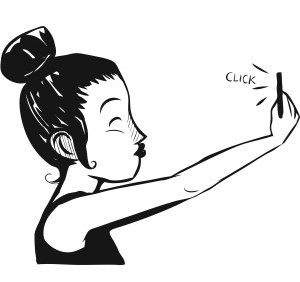The Selfie Exchange

Accounting for the meteoric popularity of selfies, some see them as a means of free self-expression among teens. For example, “Selfie,” a short marketing film made by Dove, the soap manufacturer, depicts teens taking selfies to express their “true selves” and “true beauty.” But sociologists tell us that selfies, rather than liberating youth to be whomever they wish, may in fact act as a kind of social capital.
Teens participating in an online social network in Israel told sociologist Ori Schwarz that they understood the selfie as a form of currency. The “right” type of selfie, typically a “sexualized ad-like” pose, provided users with social capital in the form of “likes” or positive comments that were highly valued within that community, according to his 2010 Convergence article, “On Friendship, Boobs and the Logic of the Catalogue.” This social bartering process is one of the few forms of capital teens control.
In other words, in addition to being a form of self-expression, selfies may act as a kind of social real estate for teenagers.
